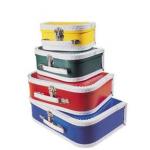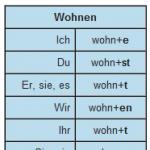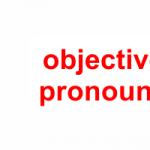Almost no one uses the bottom drawer under the oven because of his direct purpose. Most people store baking sheets, lids and other kitchen utensils in it.
It turns out that 99% of people do not use it for its intended purpose.
Hot dishes on the table

The lower compartment of the kitchen stove with drawer was designed to support optimal temperature serving for already prepared dishes. This means that food can remain warm in this drawer for an extended period of time. It’s called a “warming box”. You may have already noticed that after using the oven, the items you store in the bottom drawer remain warm for some time. This happens precisely because the compartment absorbs heat. In most cases, these drawers have a humidity controller that helps keep constantly reheated food from drying out.

But the cooked food in it does not burn, does not cool down and does not lose its taste.
Due to the fact that the drawer is located under the oven, it uses the heat from the oven when it is operating and can be used to heat dishes.

After all, there are a number of dishes that simply need a warm plate. And culinary connoisseurs will not appreciate it if you suddenly “plop” a fresh omelette into a cold plate. And for those who were still unaware, the dishes are heated specifically so that the lush omelette does not fall off.
And then there are hot salads... They also require dishes with a temperature above room temperature.
The easiest way to reheat plates before serving is to keep them in the oven at 80-90 degrees for a few minutes (or in a drawer under the oven).

Imagine this: you prepared soup, you and the children ate it, but your husband has not yet come home from work. Instead of leaving the pot on the stove or putting it in the refrigerator and then reheating the soup, you can simply place the pot on this shelf and the soup will stay warm!

Or your son just doesn’t want to tear himself away from computer game, and lunch is already on the plate. Don't yell at him. Let him finish playing for these treasured 15-20 minutes, and put the plate of food in this box under the stove. This way you will maintain the temperature of the dish and save your and your child’s nerves.
In addition, this compartment is perfect for heating bread, especially in cases where the bread has become a little stale.

The most amazing thing is that all the instructions for the stoves say what this box is for, but no one uses it for its intended purpose!
Unfortunately, we were unable to find confirmation of this theory in the manuals for kitchen stoves in Russian. In each of them it is designated as a “drawer”, and in each of the manuals it is silent on what it is even needed for.

I would also like to draw your attention to the fact that rags, paper and other flammable items cannot be stored in this box.
The drawer under the oven in the stove often raises questions even among experienced housewives who think about its purpose. Most often, frying pans and other kitchen utensils live in it. However, the purpose of the additional compartment is determined by the type of stove and the functions included in it by the manufacturer, and may differ for different models.
Purpose of the drawer under the oven: truth and speculation
The presence of an additional compartment depends on the model of the household appliance. Built-in or pull-out compartments are typical for gas and combination types. In electric or induction versions, such designs are provided less frequently and depend on functional features selected stove or oven.
One common misconception is that the purpose of the additional compartment is to create thermal insulation between the bottom of the slab and the floor. However, for this purpose, a special box is installed, and thermal insulation bases are used for installing equipment. The built-in drawer does not affect this parameter in any way.
The drawer under the oven is convenient for storing molds and baking sheets.
When answering the question whether it is possible to store kitchen utensils in such drawers, refer to the instructions included with each stove. In most cases, this compartment is labeled as an additional storage compartment. However, consumers themselves are more inclined to consider it an additional compartment for pans, trays and baking sheets.
The instructions for the Lysva GP 400 M2C stove clearly indicate the purpose of the additional drawer
Does it heat up or not?
The situation is different with the theory of heating food in a drawer. Consumers greet this option coldly, justifying their distrust with the following factors:
- this compartment gets dirty quickly and is not protected from dust;
- in the instructions, manufacturers designate this compartment as auxiliary for storing dishes and other utensils;
- the compartment has too large gaps to retain the heat necessary for heating.
Some manufacturers install special compartments that allow you to keep food warm for a long time.
Such doubts are understandable, but this function is still present in some models, which is also noted in the instructions for the corresponding stove. In such cases, the compartment is called a heating cabinet or oven compartment.
The manufacturer of the Ardo C 640 G6 stove provides a heating compartment function
The main caution when using an additional drawer under the oven is not to place flammable objects or substances in it, as well as plastic dishes and containers. This rule applies to any type of slab. It is not recommended to store products here that will spoil when exposed to elevated temperature air.
Hello, dear reader! If you are now thinking about the design of a cabinet for an oven, then read the article to the end and you will find out almost everything possible options. I'll tell you in detail about the pros and cons of each version.
The result of reading the article will be your informed choice of a specific module. You will know exactly why you need such a cabinet and will get maximum pleasure from your choice in the future.
Oven cabinet designs
There are two main types of oven modules. Moreover, each of them has its own additional variation. The most common type is the oven under hob. And the second, in my opinion more convenient, is an oven in a pencil case.
The design of the cabinet under the hob has two options - with a drawer at the bottom of the oven and with a drawer at the top of the oven. I will tell you about the pros and cons of each design in the following paragraphs.
The design of the cabinet in the pencil case, at eye level, has an option with work surface above the cabinet and in the pencil case at eye level without a table top. I’ll tell you about the pros and cons of each design in the following paragraphs.
Advantages and disadvantages of under the hob
By placing the cabinet under the hob, a common cooking area is created. The design is especially relevant for saving space in the kitchen. The undoubted advantage is that such a cabinet is suitable for a housewife of any height.
The disadvantage of this arrangement is that it works in a bent state. You will have to constantly bow while cooking and cleaning the oven. If your woman has a bad back, you will be left without baked dishes.
There is a cooling vent at the bottom of the hob. When the drawer is located on top, under the hob, there is a risk of blocking this system. If a sheet of paper gets into this box, it is simply sucked in and the air flow is blocked.
Advantages and disadvantages of the design in a pencil case
The location of the oven at chest level makes for comfortable operation of the oven. The hostess is happy to prepare a lot of delicious food. She doesn't have to bend over to look into the closet. And cleaning doesn't take much effort.
Perhaps the only drawback, when the oven is located in a pencil case, it is difficult to use for women of small stature. Again, this problem can easily be eliminated by design.
You should pay attention to the reinforcement on which the oven stands. To do this, you need to screw two strips to the sides of the pencil case, under the load-bearing horizon. The stove has a decent weight and without reinforcement there is a risk of the structure collapsing.
Dimensions and assembly diagram of the oven cabinet
The dimensions of the built-in oven remain unchanged. Therefore, you can never go wrong when designing a cabinet. About 2 years ago the hinges on the cabinet door were replaced. Now it does not stick out from below when opening.

Here is a standard diagram for assembling an oven cabinet. Pay attention to the inner sidewalls, they are mandatory in the design - they strengthen the horizon. The bottom and horizon are 20 mm shorter than the sides for ventilation of the cabinet. The diagram does not show a box.
Detailing
600×530 – 1 Bottom
568×530 – 1 Bearing horizon
704×550 – 2 sides
88×550 – 2 Horizontal supports
477×50– 2 Front and back panels of the drawer
116×596 – 1 Facade
505×495 – 1 DVPO Drawer bottom
Within walking distance from you, located according to the calculation of cabinet furniture.
Here is a standard diagram for assembling a pencil case with an oven. The design also contains strips that reinforce the load-bearing horizon. The horizons above the oven are 20 mm shorter in depth. For free air circulation.
Detailing
600×550 – 1 Bottom
568×550 – 1 Bearing horizon
2024×550 – 2 Sidewalls
60×550 – 2 Horizontal supports
568×530 – 2 Horizons above the cabinet
716×596 – 2 Facade
715×595 – 1 DVPO Rear wall bottom
709×578 – 1 DVPO Rear wall top in groove
The assembly scheme for a cabinet without sidewalls has a number of advantages over other options. There is no need for reinforcing bars, which means the drawer is wider accordingly. A gap is added on the sides of the oven walls and, of course, less material consumption.
Detailing
600×550 – 2 Bottom and cover
88×550 – 2 Sidewalls
60×600 – 2 Planks for fastening the cabinet
509×50 – 2 Front and back panels of the drawer
500×50 – 2 Drawer side strips
116×596 – 1 Facade
115×595 – 1 DVPO Rear wall
537×495 – 1 DVPO Drawer bottom
Required ventilation
Particularly meticulous customers express dissatisfaction with the facial gap between the countertop and the oven of 5-6 mm. This gap is necessary for the proper operation of the hob and oven.
Not everyone knows that hobs have a cooling system; it is located at the bottom of the structure. The required flow circulates through this gap. The air enters through the distance between the base and the bottom of the cabinet, goes around the back of the cabinet and exits from the top.
I covered the topic of oven sockets in detail in. In which he told where and how to install sockets for the oven. Pointed to common mistake. If you are planning to install a cabinet, you should definitely read it.
Conclusion
The oven in the kitchen is one of important elements and its location should be carefully considered. So as not to lament in the future by decision. I hope my article will help you cope with this task.
If you need detailing of cabinet or built-in furniture, . We will definitely discuss the terms of cooperation and come to a common opinion. For a moderate percentage for my work, I will prepare for you detailed project on time.
What would you like to add to this article?
Tell me about your experience in the comments.
I will be very interested to hear your stories!
With good thoughts about you, always in sawdust :)
Rekun Dmitry.
Currently, the vast majority kitchen sets are designed with, therefore, understanding the design of such modules is very important.
The box we are considering has two unchanged sizes:
- This is its width, which is 600mm
- And, which is also equal to 600mm (sometimes the opening is designed with a height of 595mm).
From total height box, only the size of the lower drawer with the front depends.
The dimensions of the niche for installing the equipment we are considering can always be found in the instructions for it.
Let's calculate the module details:
Horizon – 600 by 460 (mm) – 1 pc.
Side – 870-28-100-16=726 (mm), where 28mm is the thickness of the tabletop, 100mm is the distance from the box to the floor (height of the supports), 16mm is the thickness of the lower horizon.
- Side – 726 by 460 – 2 pcs.
- Horizon 2 – 600-32=568 (mm), where 32mm is the thickness of the two sides of the box.
- Horizon 2 – 568 by 460 – 1 pc.
- Cabinet strip – 568 by 100 – 1 pc.
It’s also worth saying a few words about the body strip.
IN in this case, it is designed alone, and is located 10mm below the upper edge of the side ().
This is done so that when using a tabletop with a thickness of 28mm, it is normally attached to the tabletop and does not rest against the bar itself (sometimes the dimensions of this equipment may exceed the height dimensions of the tabletop).
By the way, I have often come across training materials online where the casing strip is not designed at all in the box we are considering.
I think this approach is not correct, since this bar maintains the distance between the sides of the module, and it is necessary in any case.
Let's calculate the front for the drawer below
The height dimension that it covers is:
870-28-100-600=142 (mm), where 100mm is the height of the adjustable supports, 600mm is the internal opening of the box.
You also need to know that the depth of the oven is such that when the back “overlap” of the countertop onto the box is 100 mm (namely, this (and more) size should be given to kitchens that include similar modules), in the projection of the oven (on the wall ) there should not be anything (sockets, pipes, etc.), since the cabinet may simply not “fit” into the box.
The photo shows an option when there are sockets on the part of the wall visible through the opening, which then had to be removed. Therefore, these problems need to be solved at the kitchen design stage, and not when it is almost installed. You also need to take into account the evenness of the floors. If they are not level, then the lower modules will be adjusted, and accordingly, the position of the projection of the opening of our box on the wall will change.
This all needs to be taken into account.
Such modules can also be designed in such a way that they are located not at the bottom, but at the top, but we’ll talk about that.
That's all.
See you in the next articles.





In traditional kitchen ovens The oven is combined with a hob. But not all housewives are satisfied with this option for organizing their workspace. To make the cooking process as convenient as possible, and the kitchen interior stylish and compact, special furniture is used to build in ovens.
Features and benefits of a kitchen with a built-in oven
An oven cabinet is a structure designed to accommodate an oven. It can either be part of a furniture set or purchased separately.

The advantages of a kitchen interior with a built-in oven include:
- visual appeal - such an interior looks much more elegant than a kitchen with a conventional oven;
- saving useful space;
- the ability to organize a “work triangle” (food preparation area) in a way that is convenient for the owners of the house;
- practicality - such furniture often combines several functions at once. For example, it can serve as a storage system.

But this solution also has features that must be taken into account when choosing:
- the cost of built-in appliances complete with furniture is higher than traditional ones;
- if the equipment is rearranged or fails, problems may arise: the oven will have to be changed along with the cabinet, since it will be difficult to find a structure that is suitable in size - usually the furniture is selected to fit the equipment, and not vice versa.
Types of kitchen cabinet designs for built-in ovens

To embed equipment, two types of furniture are used:
- floor cabinets;
- cabinets.
The cabinet for the built-in oven allows you to place it at a height of no more than 20 cm from the floor. For most housewives, this is a familiar option.

The oven case involves placing equipment on one of its shelves and has the following advantages:
- allows you to set the oven at the optimal height;
- makes it possible to make it inaccessible to small children;
- Ideal for people who have difficulty bending.

Pencil cases are not suitable for cramped kitchens - they look too bulky there. In this case, it is better to choose a taller floor cabinet.
Depending on the shape, oven furniture can be:
- straight - in the form of a rectangle. Typically, such designs are part of the furniture composition of the set;
- corner – made in the form of triangles or trapezoids and allow you to install equipment in a corner.










Particular attention should be paid to the material from which the cabinet is made. It must not only withstand the impressive weight of the equipment, but also be heat-resistant and safe for humans.

To make structures for the oven use:
- Chipboard is inexpensive and does not have high performance properties;
- MDF is a material more High Quality. Furniture made from it is durable and does not deform under the influence of steam;
- natural wood is a material that requires special care. It is used for the production of oven cabinets in rare cases.
Fibreboard or plywood are used for the manufacture of rear walls and bent elements of the facade.
The material itself and its coatings should not contain toxic synthetic substances: when exposed to heat, they enter the air and can cause serious poisoning.
How to choose an oven cabinet - what requirements should you make?

Built-in ovens can be:
- gas;
- electric.
Gas ovens are more expensive, but pay for themselves faster - gas is cheaper than electricity. However, the heat is not distributed so evenly in them and some products are not baked.

In any case, the furniture must be equipped with a ventilation system - a grille or special openings. Some models are made without a back wall.
Electric models are not economical and require high-quality wiring, but dishes in them are cooked evenly, for which they have received recognition from most housewives.
It is important to choose the right size of furniture. If this is an oven cabinet, then its height is usually from 65 to 80 cm.

Depending on the design, this parameter includes:
- height of the oven box – 59.5 or 60 cm (standard);
- height of legs/base – 10-12 cm;
- tabletop thickness – 2-4 cm;
- drawer height – 10-20 cm.

The depth of the cabinet is from 50 to 65 cm, depending on the model of the built-in equipment. Of this, about 10-13 cm is the overlap of the countertop on the body, which is necessary for stable placement of the oven. Width varies from 50 to 120 cm.
Dimensions kitchen pencil cases are more variable, their depth and width are identical to the parameters of the cabinets, and the height can range from 160 to 220 cm.
The oven module should always be larger than the appliance itself to ensure free air circulation.
What can a cabinet for a built-in oven contain?

A cabinet for a built-in oven can combine the functions of other household appliances:
- Microwave ovens (microwaves);
- hobs.
An oven with a microwave function has gained wide popularity due to its practicality and convenience. It allows you to use the oven as a microwave, and modern models equipped with other operating modes - for example, defrosting, grilling, baking.

Structurally, this technique is an oven equipped with a magnetron - a microwave radiation generator.
Any oven can be combined with a hob. There are two options for this technique:
- dependent set - in it the cabinet and panel have common system management;
- independent - in this case, the oven and panel are purchased separately.

The dependent set looks stylish and harmonious, but is inferior to the independent one in practicality - if it breaks down, the entire structure fails. In addition, in the latter case, it is possible to choose equipment that meets the needs of the housewife.
Additional equipment for oven cabinets - storage and opening systems

Furniture under the oven can be used to store kitchen utensils.
For floor cabinets, the storage system is represented by an upper or lower drawer of limited height. Because of this, only certain items can be stored in it. For example, frying pans and baking sheets.
A pencil case has more possibilities for organizing a storage system - in it it can be represented by open shelves, drawers and compartments with doors.

Typically, the oven is built into the middle of the structure, so the storage compartments are located at the bottom or top.
In closed sections of the cabinet-case they are used Various types door opening mechanisms:
- swing doors are the simplest: the doors are attached to hinges and open towards you;
- folding – horizontal system on hinges: open up or down;
- lifting - open using gas lifts.
Rules for placing an oven cabinet in a kitchen set

To ensure that the oven cabinet fits harmoniously into the kitchen interior, is convenient and safe to use, follow the following recommendations when placing it:
- follow the rule of the “work triangle” - a space limited by three points: oven, sink and refrigerator. The total sum of its sides should not exceed 6 meters;
- choose a comfortable height for the equipment. The best option– from 20 to 80 cm above floor level;
- Do not place the oven close to the refrigerator: this may lead to damage to one of the appliances;
- the distance between the sink and the oven should be less than 45 cm to avoid short circuits;
- the gas oven should be located no further than 1.2 m from the pipe - the longer the hose, the less reliable it is;
- think over the opening zone. It should allow you to freely remove the baking sheet from the oven.
Stages and rules for installing an oven in a kitchen set

Installation of a built-in oven consists of several stages:
- checking equipment for functionality by connecting to the network;
- installing the cabinet in the right place;
- checking the electrical wiring - it must have a sufficient level of resistance and be grounded. It is desirable to have a circuit breaker that is triggered by voltage surges;
- if the stove is gas, check the pipes. They must be intact, without damage;
- placing the oven in a furniture niche. If the cabinet is equipped back wall, then you need to make holes in it for the wires;




